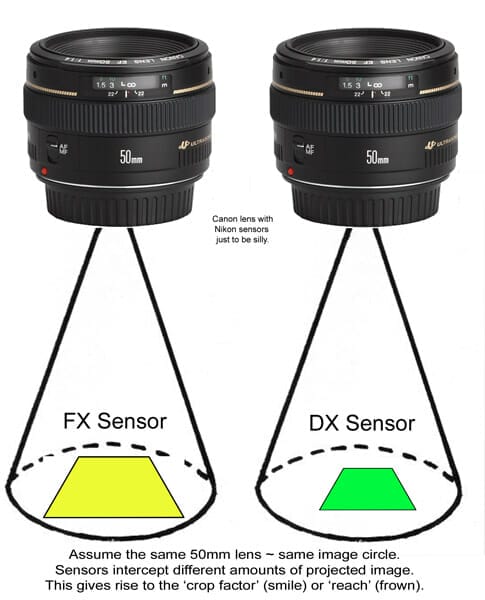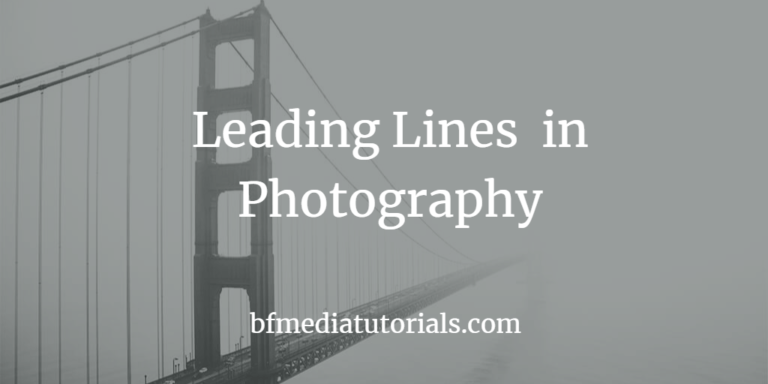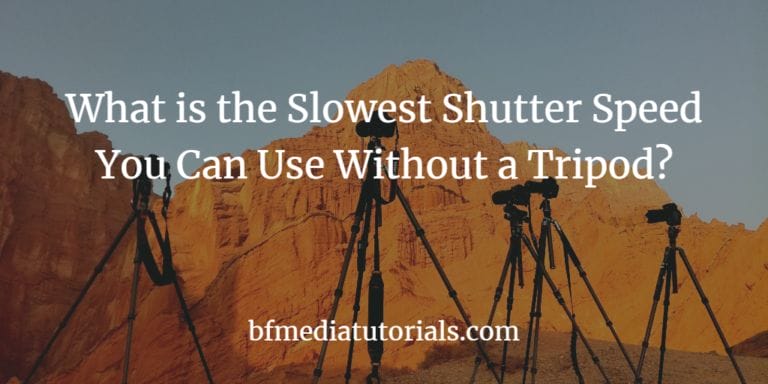FX Lenses on DX Cameras – Will They Work?
Will They?
Will FX Lenses Work on DX Cameras? The short answer is: yes. Using an FX lens on a DX body is a great way to improve the quality of your photos and even save some money in the long term.
Why using an FX lens on a DX camera works
If the lens is for the same brand, let’s say, Nikon, their lenses are interchangeable. You can use a DX lens on an FX body and vice versa. They are made to be compatible with each other. From a marketing perspective, this is a smart move on their side. Here’s a list I’ve made with 3 Nikon FX lenses that will work on your DX camera.
Using FX Lens on a DX Body Will Help You Get Better Photos
The truth is that FX lenses are made better than the ones for crop sensor cameras. I gave the example in another article between a Nikon 35mm DX lens and a Nikon 35mm FX lens and the 300$ price difference hits at a difference in quality.
The FX lens is more robust, has higher quality materials, higher quality glass that lets light get better onto the sensor and, if it is the case, better mechanisms (such as Auto-Focus or Vibration Reduction). You’ll have sharper, better-looking images.
The net quality of your photos will increase just because you have a better lens. Of course, this won’t be of much use if you don’t have the skills to show for it, so, always be working on improving your photography.
Small Caution When Using an FX Lens on a DX Body
Here is just a small caution for you:
The focal length won’t be the same. In this article where I’ve talked about why a crop sensor isn’t bad, I’ve explained how a crop sensor has a different actual focal length from a full-frame sensor camera.
This means that if you buy a 35mm full frame lens, on a Nikon crop sensor your actual focal length will be 35*1.5 (Nikon crop factor), that would be 52mm. For a Canon crop sensor camera which has a crop factor of 1.6, the actual focal length will be 56mm.
Another thing you should consider is that the lens should have a motor for autofocus and aperture control. For example, the Nikon 50mm f1.8D has manual focus and aperture control but has a Knoch that allows the camera to adjust the focus.
Here’s a table with the compatibility for this lens.
If the body has the motors, then you can use the lens without any problems, but if it doesn’t have (and most of DX bodies do not), then you will have no other choice, but use manual focus.
Why Using an FX Lens on DX Body Saves You Money in the Long Term
Earlier I’ve stated that if you are going to invest in buying FX lenses even if you have a DX body, you are going to save money in the long term. Why?
Let’s say you really love photography and want to get better at it and later even get to a professional level when you will make money with this skill. If this is you, then it only makes sense that you should buy a full-frame lens when you have outgrown your kit lens.
Maybe you are starting with an 18-55mm kit lens, when you are ready to upgrade maybe to a better, prime lens, or to another zoom lens, even though the price is higher, the value you get, both in short term and in long term, is way higher.
Now, if you were to buy another DX lens, either zoom or prime, in a few years (or months) you will have to buy an FX lens anyway. So, why not better buy a full-frame lens right away and get the instant advantage of having better-looking photos.
What Lens Should You Buy
Now that we have touched on this subject, let’s see what lenses can you buy.
First, you have to face a twofold choice: will you go with lenses from your camera manufacturer, or will you go for the third party?
Camera Manufacturer or Third Party?
If you chose to go with your camera manufacturer you will pay a bit higher price, but the lens will be fully compatible and you won’t run into any unexpected and unpleasant surprises.
On the other hand, if you chose to go with a third party, you will pay a bit of a lower price, but, depending on the producer, you may run into some problems with compatibility or calibration. If you chose to go on this route, I recommend the Sigma Art Lenses. They make lenses compatible with both Canon and Nikon.
Zoom or Prime Lens?
The second choice you have to take is if you are going to buy prime lenses or zoom lenses.
Both of them have certain pros and cons (more on that in another article on zoom vs prime lenses).
I prefer a prime lens over a zoom lens because the limitation of a fixed focal distance helps with improving your photography skill. Also, the wider aperture helps you get better bokeh.
Finally, what lens?
So, finally, what lens should you buy? Here’s a list of how I’d go with it that includes both prime and zoom lenses.
- 50mm 1.8 (Check price for Nikon / Canon) – they are the cheapest
- 35mm 1.8 (Check price for Nikon / Canon / Sigma) – a good step up into a wider aperture at a good price
- 24-70mm 2.8 (Check price for Nikon / Canon / Sigma) – a good all-around lens that has many uses
At this moment you will have a great set of lens, both prime and zoom, that you can use for almost every occasion.
If you’ve bought lenses like these instead of buying DX lenses, your transition to a full-frame camera will be easier on the financial side.
Conclusion
The bottom line of what we have discussed today is that you can certainly use an FX lens on a DX body. Even more than that, you should buy full-frame lenses and use them if you are planning on going professional with photography. And even if you are just a hobbyist that wants to buy a full-frame in the future.
What do you say? Would you go and buy FX lenses to use on a DX body, or would you rather stick to crop sensor lenses? Comment in the section down below.






